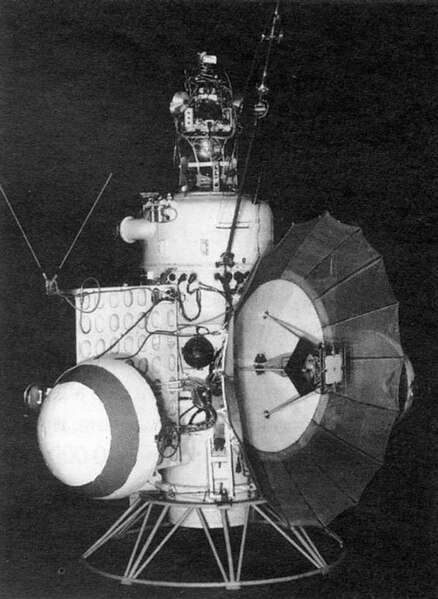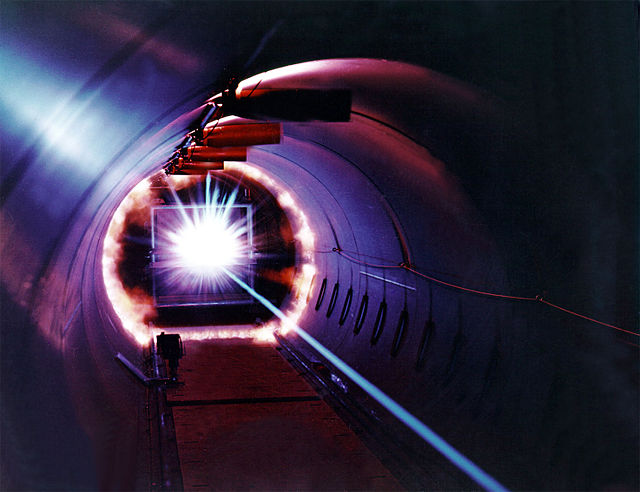Mars 1, also known as 1962 Beta Nu 1, Mars 2MV-4 and Sputnik 23, was an automatic interplanetary station launched in the direction of Mars on November 1, 1962, the first of the Soviet Mars probe program, with the intent of flying by the planet at a distance of about 11,000 km (6,800 mi). It was designed to image the surface and send back data on cosmic radiation, micrometeoroid impacts and Mars' magnetic field, radiation environment, atmospheric structure, and possible organic compounds.
Mars 1
"Mars 1" stamp in Soviet Union
A micrometeoroid is a tiny meteoroid: a small particle of rock in space, usually weighing less than a gram. A micrometeorite is such a particle that survives passage through Earth's atmosphere and reaches Earth's surface.
Micrometeorite, collected from the Antarctic snow, was a micrometeoroid before it entered the Earth's atmosphere
Lunar sample 61195 from Apollo 16 textured with "zap pits" from micrometeorite impacts
Electron micrograph image of an orbital debris hole made in the panel of the Solar Max satellite
The "energy flash" of a hypervelocity impact during a simulation of what happens when a piece of orbital debris hits a spacecraft in orbit






